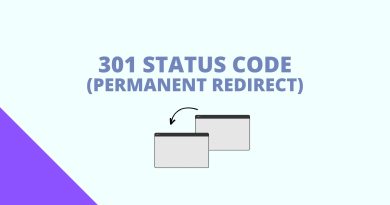HTTP 425 Too Early: Understanding and Fixing This Error
Do you ever encounter a strange HTTP 425 Too Early error when trying to access websites? This error can be confusing and frustrating, but it doesn’t have to be.
Websites are built using Hypertext Transfer Protocol (HTTP) which enables the communication between two systems across the internet. When something goes wrong with the HTTP request or response, an error like HTTP 425 Too Early can occur. It’s important to understand these errors in order to troubleshoot them successfully – otherwise, they could cause serious damage if left unchecked.
In this guide, we’ll provide everything you need to know about the HTTP 425 Too Early Error so that you can identify it and resolve it without any hassle. We’ll explain exactly what causes the error as well as give detailed instructions on how to fix it once and for all. So let’s get started!
What Is 425 Http Status Code?
The 425 HTTP early status code is an early response status code that indicates a secure connection has been established between the client and server, but the server is unwilling to risk processing the request. This error occurs when the web server receives early data in the process before it’s ready to process it.
HTTP status codes are used by servers to indicate what type of response was received from a requested page or service. The most common types of errors start with 4xx (client) and 5xx (server). A 425 error falls under the 4xx series, which means that the issue lies within the client’s browser or computer rather than on the server side. In this case, it signifies that there’s something wrong with how communication between your device and the website is taking place.
Cause Of 425 Http Status Code Error
Common causes include incorrect settings on either end, outdated applications or browsers, or even some misconfigured security software that blocks certain types of requests. Once these problems have been identified and fixed, then users should be able to access websites without any further issues.
To troubleshoot this issue, it is important to understand how TLS handshake works within the context of HTTP requests. When a client attempts to access a secure site, they must first go through what is known as a “handshake.” This involves exchanging information between the client and server so that they can establish communication over an encrypted connection. If there are any errors during this process, then it could lead to the 425 HTTP status code appearing as an error message.
Therefore, understanding how TLS handshake works can help identify if this is causing the 425 HTTP status code error or not.
Server Side Or Client Side Issue?
When a server receives an HTTP 425 status code, it is important to determine whether the issue lies on the server side or the client side. It is possible that the risk of processing a request could be too high for the server and it may automatically retry sending the response multiple times due to concerns about replay attack vulnerability. However, this error can also result from user agents such as web view android not having all their headers fully set. The status code indicates that there was insufficient information sent in order for the server to process the request properly.
In some cases, a 425 error means that something went wrong at either end which caused communication between them to fail. If it occurs on the client side, then usually no action needs to take place since any attempt by users to fix it will likely prove futile. On the other hand, if it originates from within the server itself then administrators must find out what caused it and rectify it accordingly.
How To Fix 425 Http Status Code Error
In order to fix a 425 http status code error, it’s important to understand what the server is unwilling or unable to risk processing. This indicates that the server has received and recognized the request but refuses to take any further action on it. In this case, the best thing you can do is try to retry the request if possible. It might be replayed multiple times in order for it to work correctly since sometimes there are issues with requests that might have been sent incorrectly from your end.
It’s also important to note that some servers will refuse certain types of requests by default even though they’re valid HTTP methods. Therefore, if you think this could be part of why you’re receiving the 425 error message then make sure you double-check which type of request was made so as not to get stuck again due to an incorrect method being used.
Similar Http Status Codes To 425
When you encounter an HTTP 425 error, it can be confusing to know what the issue is. As such, understanding similar HTTP status codes to this one may help in order to better diagnose and fix the problem.
The first code that’s closely related to a 425 error is the 416 Requested Range Not Satisfiable. This occurs when there’s a specific range of data requested from a server but the server cannot satisfy it due to its size or length. In comparison, a 425 error happens when something interferes with the connection between the client and server before all relevant information can be exchanged.
Another related error code is 426 Upgrade Required. This appears when the server needs some kind of upgrade in order for communication and request fulfillment to take place properly. It could also mean that newer software has been released since the last time your browser was updated which would require updating on your end too if any further requests are made. However, this should not be confused with a 425 http status code as they have different causes and solutions associated with them.
All HTTP status codes by categories
Informational responses
(100 – 199)



